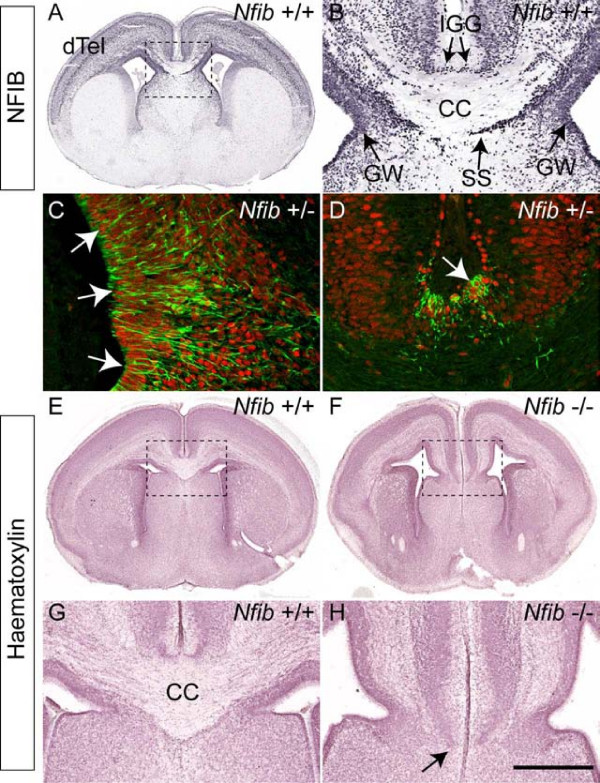Figure 1.
Expression of NFIB in midline glial populations. (A, B) Coronal section of an E18 wildtype brain stained with NFIB. (A) NFIB was expressed broadly throughout the dorsal telencephalon (dTel). (B) Higher magnification view of the boxed region in (A) showing NFIB expression at the cortical midline. NFIB was expressed in the glial wedge (GW), indusium griseum glia (IGG) and subcallosal sling (SS). (C, D) Confocal sections of E18 Nfib heterozygote brains, demonstrating the co-expression of the β-galactosidase (β-gal) reporter (red) and glial fibrillary acidic protein (GFAP; green) within the glial wedge (C) and the indusium griseum glia (D). β-gal-positive nuclei were often surrounded by GFAP-positive fibres (arrows in C, D), indicating that GFAP-expressing glia likely express Nfib. (E-H) Coronal sections of wildtype (E, G) and Nfib knockout (F, H) brains stained with haematoxylin. The corpus callosum (CC) does not form rostrally in mice lacking Nfib (arrow in (H)). Panels (G) and (H) are higher magnifications of the boxed regions in (E) and (F), respectively. Scale bars: 500 μm (A, E, F); 200 μm (B, G, H); 100 μm (C, D).

